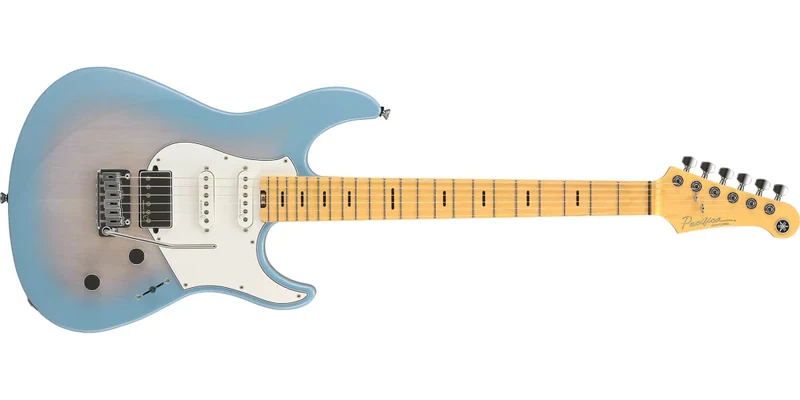
The guitar is one of the most popular and versatile musical instruments in the world. From its soothing acoustic melodies to its powerful electric riffs, the guitar has captured the hearts of music lovers across genres and cultures. Learning to play the guitar involves a deep connection between the musician and their instrument, and this relationship evolves with practice, exploration, and creativity.
The Basics of Guitar Playing
To begin, playing the guitar requires understanding its components: the body, neck, strings, and frets. Musicians use their fingers or a pick to pluck the strings, and by pressing down on different parts of the neck, they can produce different notes and chords. Guitar playing involves learning various techniques such as strumming, picking, and fingerpicking, as well as understanding music theory, including scales and chord progressions.
A guitarist’s technique and style can range widely. Some may focus on fast shredding solos, while others may prefer the mellow sound of fingerstyle acoustic playing. What ties all guitarists together is their ability to evoke emotions and stories through the strings.
Types of Guitars
The guitar world is vast, and various types of guitars cater to different musical styles and needs. Here are some of the most common types:
Acoustic Guitar

- Description: The acoustic guitar is hollow-bodied, meaning it does not require an amplifier to produce sound. It’s ideal for solo performances and small gatherings. It comes in various sizes, including dreadnoughts (larger), concert (medium), and parlor (smaller).
- Genres: Folk, classical, country, and singer-songwriter.
Electric Guitar

- Description: Unlike acoustic guitars, electric guitars rely on pickups and amplifiers to produce sound. These guitars have a solid body and come in many different shapes and styles.
- Genres: Rock, blues, metal, pop, and jazz.
Classical Guitar

- Description: A subset of acoustic guitars, classical guitars feature nylon strings, which provide a softer, warmer tone. The neck is typically wider than that of an acoustic guitar, making it ideal for fingerstyle playing.
- Genres: Classical, flamenco, and some forms of folk.
Bass Guitar

- Description: The bass guitar has four thick strings (sometimes five or six) and is used to provide the rhythmic foundation in music, offering low-frequency tones that complement other instruments.
- Genres: Rock, jazz, blues, funk, and metal.
Resonator Guitar

- Description: This type of guitar has a metal resonator built into the body to amplify the sound. It’s often used in genres that call for a distinctive “twang” sound.
- Genres: Bluegrass, blues, and country.
12-String Guitar

- Description: A 12-string guitar has six pairs of strings, adding richness and depth to the sound. It’s often used to create a fuller, more harmonious tone than standard 6-string guitars.
- Genres: Folk, rock, and acoustic.
Techniques in Guitar Playing
To master the guitar, players explore various techniques that shape the sound of their music. Some of these include:
- Strumming: The technique of sweeping a pick across the strings in a rhythmic manner.
- Fingerpicking: Plucking the strings with the fingers, often used in folk and classical music.
- Bending and Vibrato: Techniques used to alter the pitch of a note by slightly bending the string or using a vibrato motion.
- Sweeping and Tapping: Advanced techniques often used in rock and metal for rapid note sequences and intricate solos.
The Importance of Practice
As with any musical instrument, regular practice is essential for improvement. Guitarists often begin by learning basic chords and progressions, moving on to more complex techniques and styles as they become comfortable. Over time, guitarists develop a personal playing style, which becomes an integral part of their musical identity.
In addition to technical practice, playing with other musicians, experimenting with different sounds, and studying guitar heroes from different genres help deepen the guitarist’s understanding and connection with the instrument.
The Art of Playing the Guitar
The guitar is much more than just a stringed instrument; it is a medium of expression that bridges cultures, generations, and musical genres. Whether you are strumming a simple chord progression on an acoustic guitar or shredding a solo on an electric guitar, the art of playing the guitar continues to captivate people around the world.
types that make it a timeless favorite across genres and cultures.
allaboutimage.org
Ah, I always wanted to learn the guitar, but every time I try, my fingers just don’t cooperate!
slotmahjongways3.com
Learning the guitar is such a cool journey, from figuring out the basics to creating your own unique sound! phamngocson.com
Playing guitar is all about feeling the music and having fun—whether you’re just strumming some chords or shredding solos, it’s a journey that never gets old! metforminpharm.com
Playing the guitar is like telling a story through strings, whether you’re strumming a soft tune or rocking out with an epic solo. https://bobbykertanegara.com